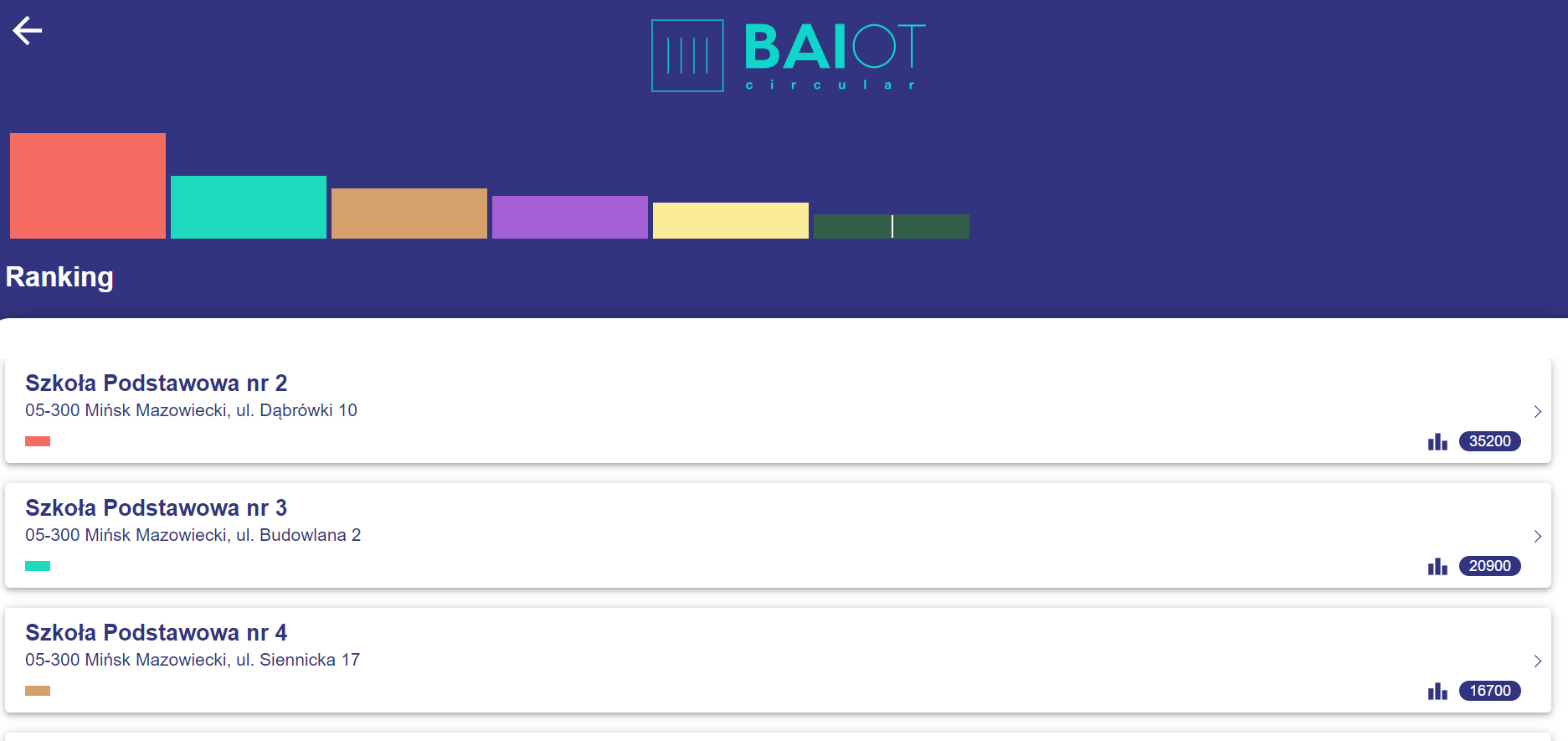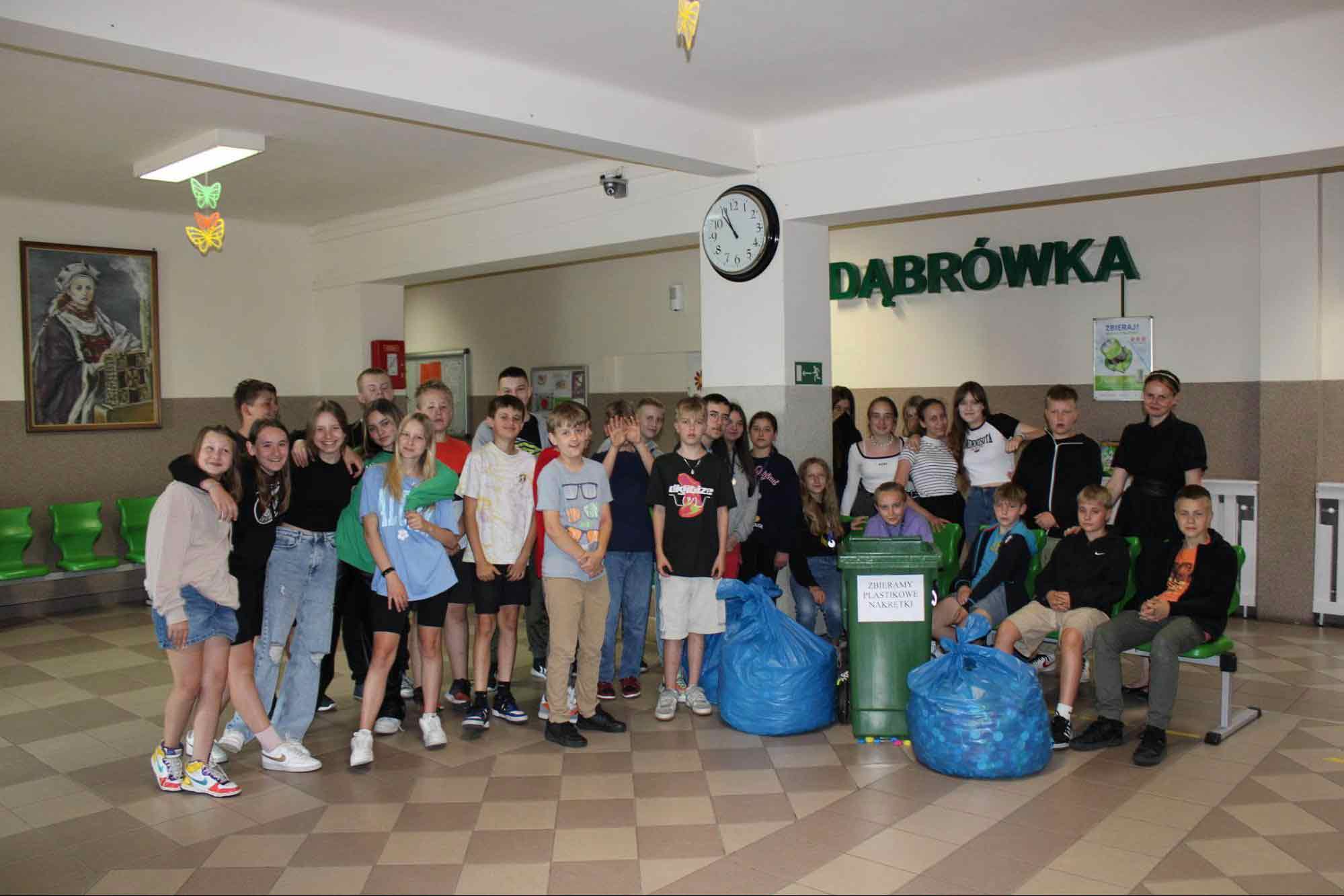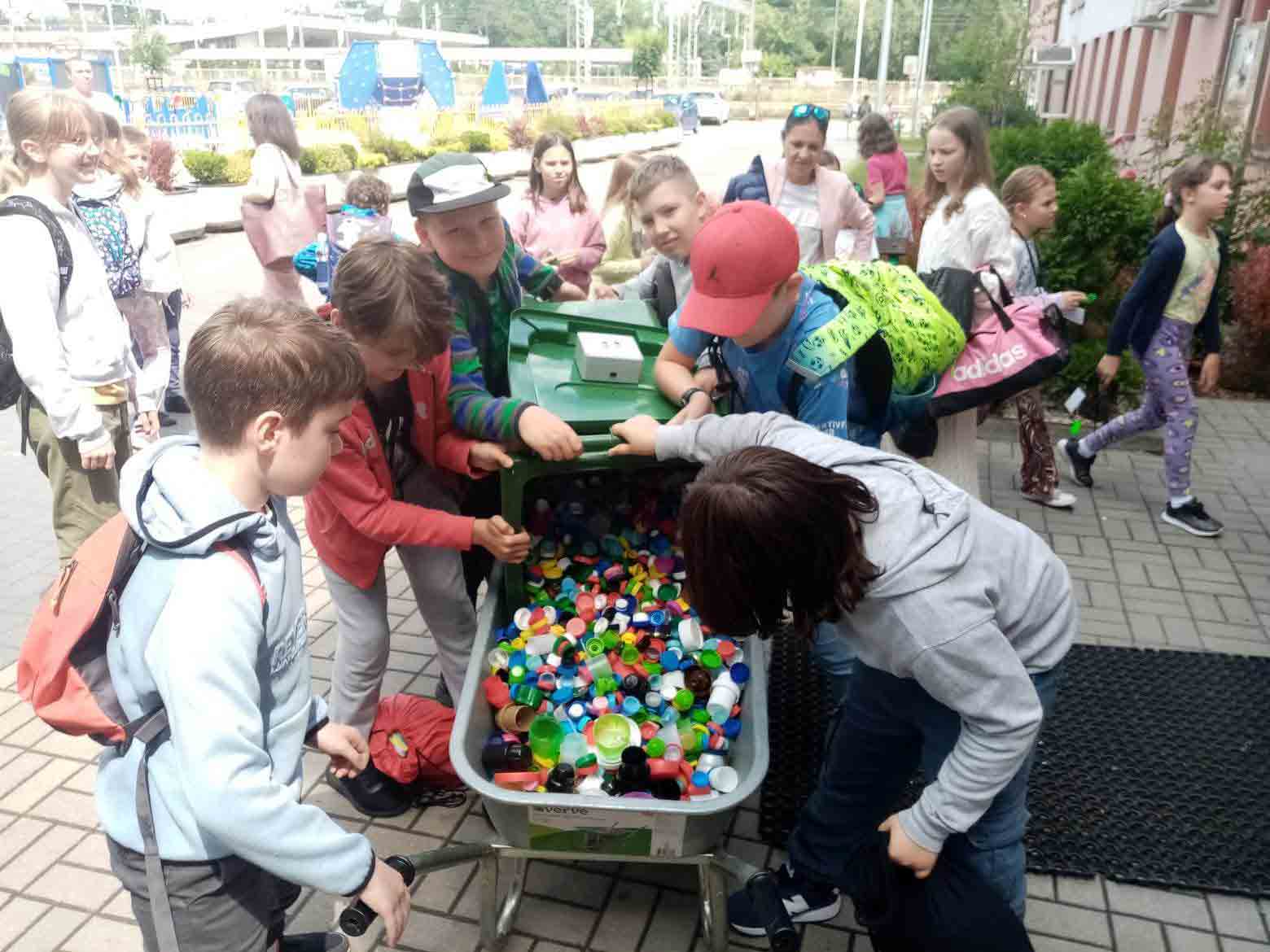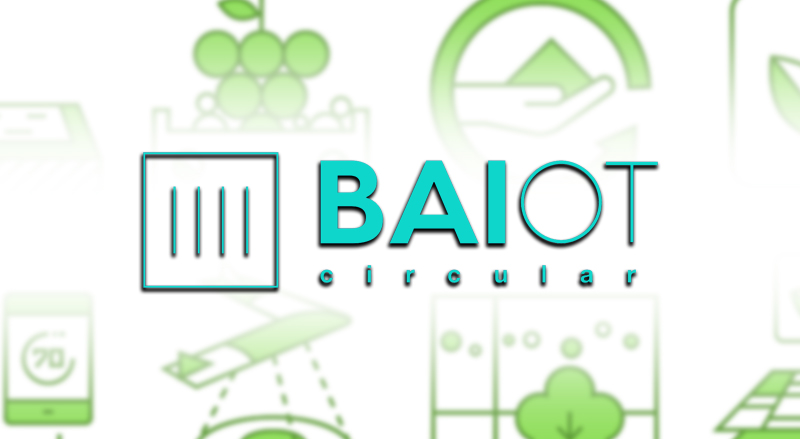The BAIOT project is part of the larger initiative called the Blockchain City Programme, supported by the BMW Foundation Herbert Quandt.
The project allows students at six primary schools to trade plastic caps (for recycling purposes) in return for NFT tokens, which are stored in web3 wallets.
The caps are placed into a container which is tracked by an IoT device and an attached mobile application which shows how many tokens each school has. After three weeks, the tokens are exchanged for trees – directly benefiting the environment. Notably, this entire system is built on the BSV blockchain, which acts as a database and as the ‘connective tissue’ for all of these technologies.
The project is a collaboration between various entities, including the administration of Minsk Mazowiecki, the Architects Foundation, the Polish Blockchain Association, and the BAIOT startup.
Background and Context of the BAIOT Project
The BAIOT project showcases a feasible proof-of-concept for using blockchain and IoT for industry services. In the case of the collaboration with Minsk Mazowiecki, it primarily focused on the educational component and sought to highlight the possibilities that arise from the fusion of blockchain technology and the Internet of Things (IoT).
Notably, the BAIOT initiative garnered recognition and was featured as a showcased project at the RE*LEADERSHIP conference held in Denmark, which was organised by the BMW Foundation Herbert Quandt.
Marcin Rzetecki, Co-Founder of the BAIOT startup said this about the collaboration with the schools in Minsk Mazowiecki: ‘The stage of cooperation with schools is very important. We value educating young people and raising awareness of blockchain technology.
‘However, our main goal as BAIOT is to provide a business service that enables trust between customers and machine-to-machine processes and to create an economy of things with IoT based on blockchain technologies.’

Implementing tokenised recycling in primary schools
Rzetecki presents the project in more detail, it was implemented with primary schools in the city of Minsk Mazowiecki in Poland. The students collected plastic caps, which were exchanged for tokens. The tokens are then used to plant trees, and a mobile application tracks the progress.
The co-founder of the BAIOT project emphasised the importance of education, blockchain technology, and tokens in building new engagement models and addressing environmental responsibility with gamification elements. To realise this project, four technical elements are necessary, as Rzetecki showcases.

IoT Devices
These devices are used to measure the level of plastic caps in the container every 10 minutes. By collecting data from the IoT devices, the project can monitor the filling of the container and track the students’ contribution to recycling efforts.
The data collected by the IoT devices is then sent directly to the mobile application and backend system, enabling real-time monitoring and analysis.

Web3 wallets and blockchain technology
Web 3.0 wallets are utilised to store and manage tokens. In this specific use case, two types of tokens are implemented: fungible tokens and non-fungible tokens (NFTs).
The web3 wallets allow schools and students to securely hold and transact these tokens. It is emphasised that the tokens are not solely for speculative purposes but are given genuine value within the project.
The project incorporates the use of blockchain technology, specifically the BSV blockchain, to store immutable data. The blockchain serves as a distributed database that ensures transparency and trust by recording all information from IoT devices and other relevant data sources. By utilising the blockchain, the project can verify past events and maintain the integrity of the collected data.

Tokens and NFTs
Tokens play a significant role in the project by incentivising and rewarding schools for their recycling efforts. If a school demonstrates an increase in plastic caps collected compared to the past, they are rewarded with tokens.
These tokens are then directly sent to the web3 wallets associated with each school. Additionally, the tokens can be exchanged for trees simulating economic exchange.
The use of tokens based on blockchain technology allows for the creation of a new economy, engagement models, and loyalty points that are more inclusive and have higher liquidity compared to traditional loyalty programs.
Exploring the role of emerging technologies in responsible actions
The project illustrates in several aspects how emerging technologies can be used to promote sustainable and environmentally responsible actions. The project can be applied in similar ways in schools around the world to pursue similar goals. Beyond the gamification aspect of education, however, the project is also a proof of concept for other industries and services, such as the supply chain.
The IoT devices can capture real-time data such as temperature, location, and handling conditions, ensuring the vaccines’ integrity is maintained throughout the transportation process. Simultaneously, these real-time data are recorded on the blockchain, which results in every single step in the transport process being recorded and can be tracked and verified by participants and partners.
Two aspects make BSV blockchain relevant as a foundation for blockchain solutions in this context. On the one hand, as a scalable blockchain with transaction costs at a fraction of a cent ($0.000003), the BSV blockchain allows the creation of economically feasible incentives for sustainable and environmentally responsible behaviour. On the other hand, the BSV blockchain is the most energy- and co2-efficient blockchain – and it scales on a global enterprise level.
